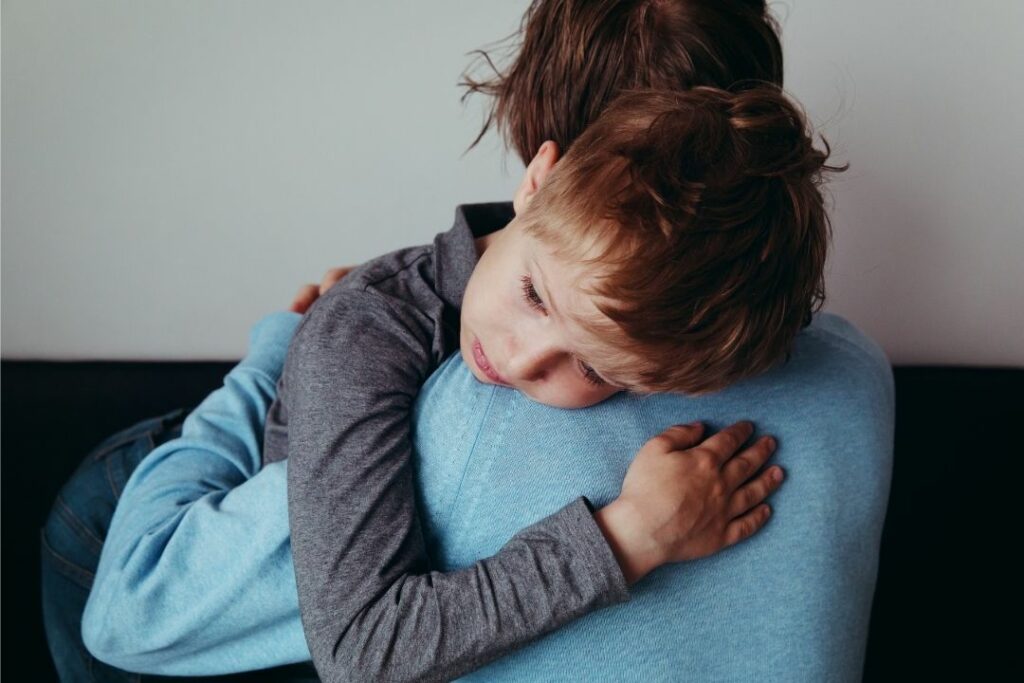
Co-regulation is a term we’re seeing used more and more to describe the process of how parents and caregivers can support their children’s self-regulation abilities. Based on how co-regulation is frequently talked about on social media, many parents think it means staying right next to their upset child no matter what.
However, this isn’t exactly how co-regulation is defined in the research.
So, what is co-regulation? In a previous post we wrote we did a deep dive into the core tenants of co-regulation, which can be summarized into three main take-aways:
- Co-regulation is the interactive process between caregiver and child that facilitates the development of self-regulation.
- The way that adults provide co-regulation is not one behavior, nor is it one-size-fits-all. In fact, attempts to reduce it down to one thing (aka stay next to a child during big emotions, no matter what) is not only scientifically unfounded, but may decrease safety for both parents and children. It could also accidentally undermine the development of self-regulation.
- The younger a child is developmentally, the more likely they may need their caregiver to stay close to the action as they try to regulate their emotions.
Here’s where it gets sticky. If our kids need our help regulating emotions, what does “staying close to” mean? And how much space do we give? What are the other aspects of co-regulation?
Three pillars of co-regulation
Wouldn’t it be lovely if we could give a script that would work every single time for every single situation!? Unfortunately, it doesn’t work that way.
As we’ve established previously, co-regulation means the supportive ways adults interact with kids that foster self-regulation. Importantly, co-regulation is not just one thing — it’s a combination of behaviors that caregivers engage in that allows self-regulation skills to develop over time. This framework comes from several recent research briefs summarizing the research on children’s self-regulation development. You can read these here and here.
From this research, we can see that there are three categories of co-regulation behaviors that adults need to provide.
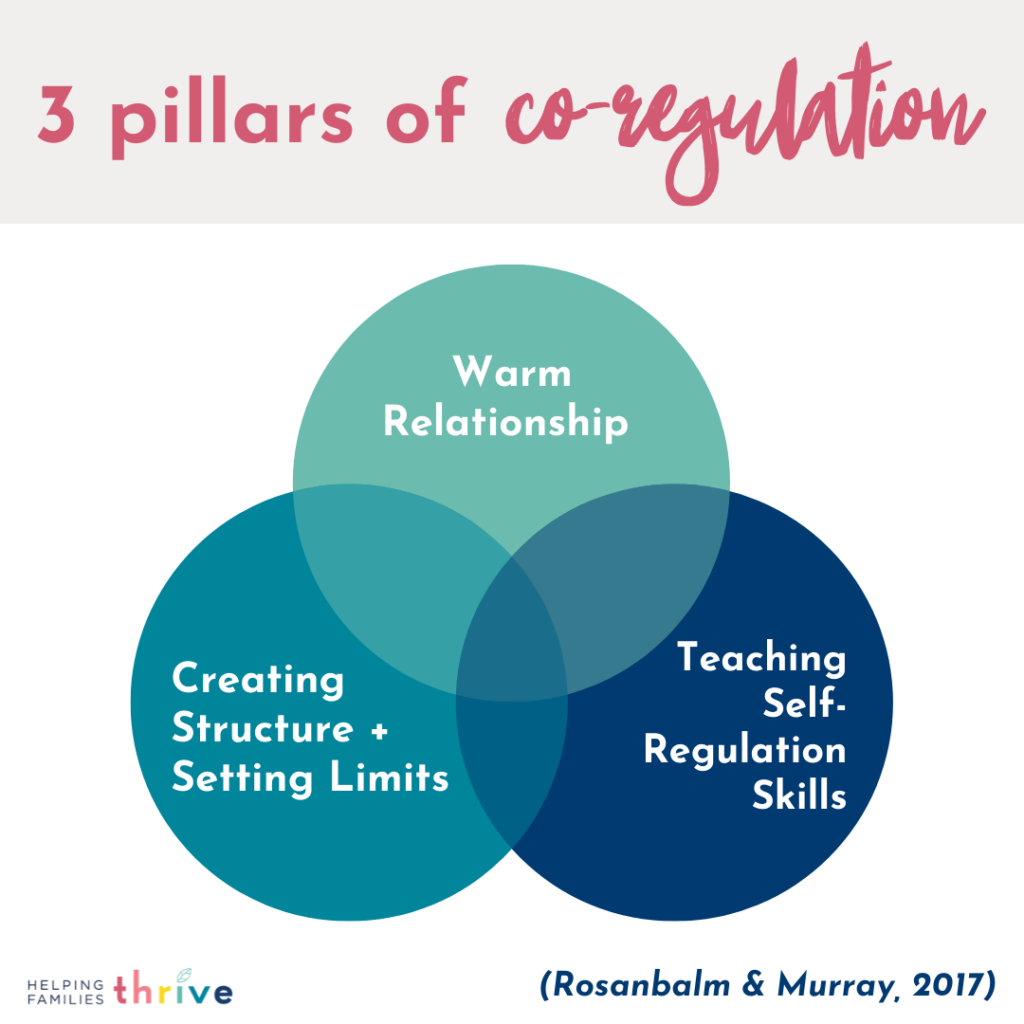
There are a variety of parenting behaviors that fall within each of these categories.
1. Provide a warm, responsive relationship
- Show affection
- Express interest in child
- Spend positive time together
- Be responsive in times of distress (note: Being “responsive” does not mean being reactive. It means pausing to provide the level of support your child needs and adjusting accordingly. See this post for more.)
2. Structure the environment and set limits
- Have predictable routines
- State rules and expectations clearly
- Provide external structure for calming down, including a calm-down space and materials
- Use logical consequences for negative behaviors (depending on age)
3. Teach and coach self-regulation skills
- Label positive and challenging emotions
- Use modeling, prompting and praising of self-calming strategies throughout the day, not just in moments of escalation
- Assist in problem solving
The importance of all three pillars of co-regulation
As you can see, co-regulation involves many ways that caregivers engage in with their children. Each of these pillars is equally important in supporting kids’ development of self-regulation.
Promoting a warm relationship with your child isn’t something many of us would argue against. In fact, every evidence-based parenting intervention begins with rigorously studied tools for facilitating warm parent-child relationships. The second and third pillars of co-regulation are often overlooked and/or misrepresented in parenting information — particularly when it comes to co-regulation!
Notice that none of these tools indicate that co-regulation equals physical proximity and cozy corners. Rather, effective co-regulation involves all three of these pillars. Co-regulation means to be warm and empathetic AND to set boundaries. Additionally, being responsive may include giving space when a child is upset or removing a child from a situation. Finally, co-regulation includes providing high levels of structure and, depending on the age of the child, using logical consequences!
“Physical proximity is not the foundation of co-regulation”
The fact that logical consequences are one aspect of co-regulation may surprising to some. This is why we advocate so strongly for spreading only research-based parenting information rather than cherry-picked advice that lacks nuance. In our Essentials eCourse, we teach parents skills from the most studied parenting programs. When you look at the skills in the course, they map almost directly onto the three pillars of co-regulation. For example, our course teaches skills for relationship building, emotion coaching, boundary setting, routines, and using consequences effectively (plus much more).
Where does this leave us?
In the heat of the moment, remember the power of the pause (see this post for more). Then when emotional storms have calmed, reflect back and think about these three pillars. What are areas of strength for you and your child? What tool could you improve upon?
Now, pick one thing. For example, if you feel that some work could be done in the warm relationship category, you can commit to doing daily special time with your child. Or, perhaps you recognize that you need to increase structure. If that’s the case, spend time this week developing more predictable routines. Remember, small changes add up to big results over time.
At Helping Families Thrive, we are all about evidence and balance. Beware of oversimplified messages about what it means to be a “good” and “responsive” parent. This three-pillared framework of co-regulation is consistent with decades of research on evidence-based parenting interventions, all of which balance warmth and boundaries.
If you need more support, check out our Essentials eCourse, a concrete, rigorously studied how-to on all pillars of co-regulation. Evidence and balance. Less shame and more support. You’ve got this.
References
Murray, D. W., Rosanbalm, K., Christopoulos, C., & Hamoudi, A. (2014). Self-Regulation and Toxic Stress Report 1: Foundations for Understanding Self-Regulation from an Applied Perspective. Washington, DC: Office of Planning, Research and Evaluation, Administration for Children and Families, U.S. Department of Health and Human Services.
Rosanbalm, K.D., & Murray, D.W. (2017). OPRE Brief #2017-80. Washington, DC: Office of Planning, Research, and Evaluation, Administration for Children and Families, US. Department of Health and Human Services.

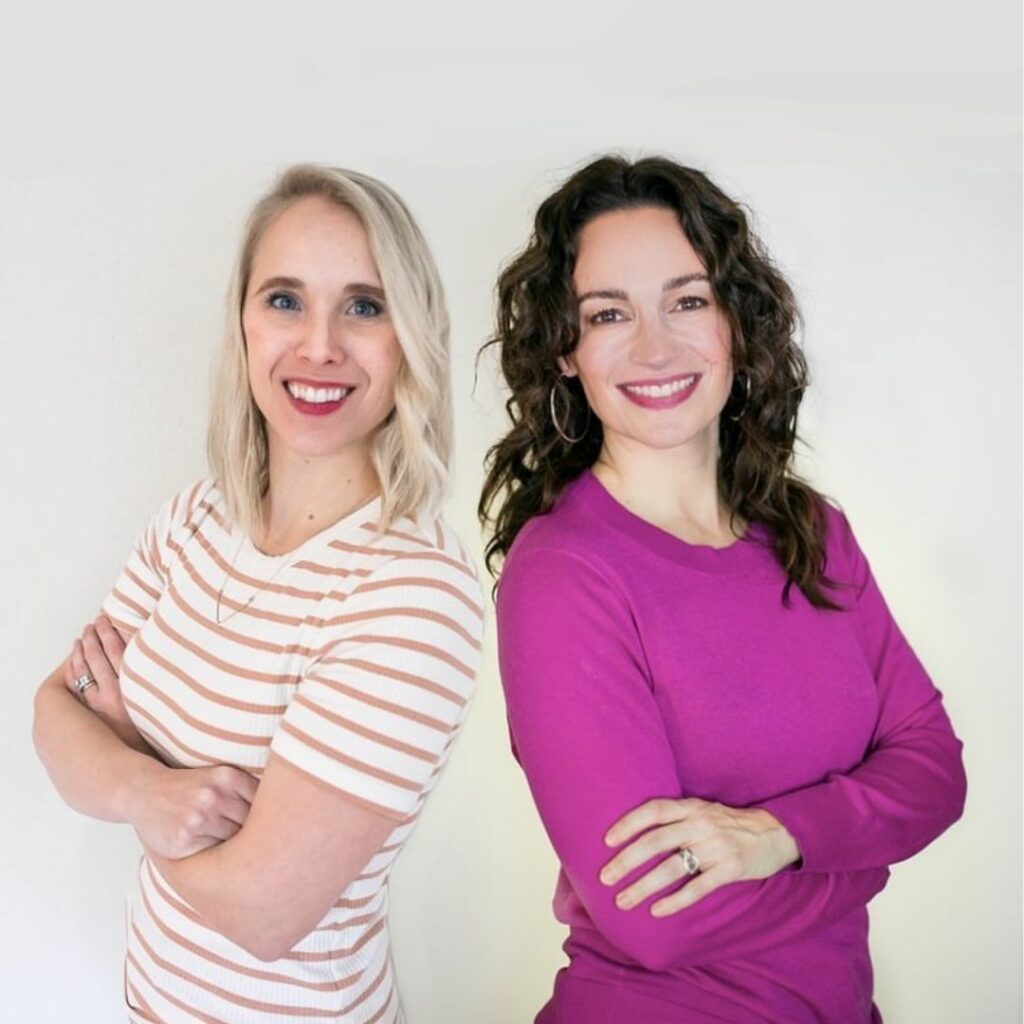

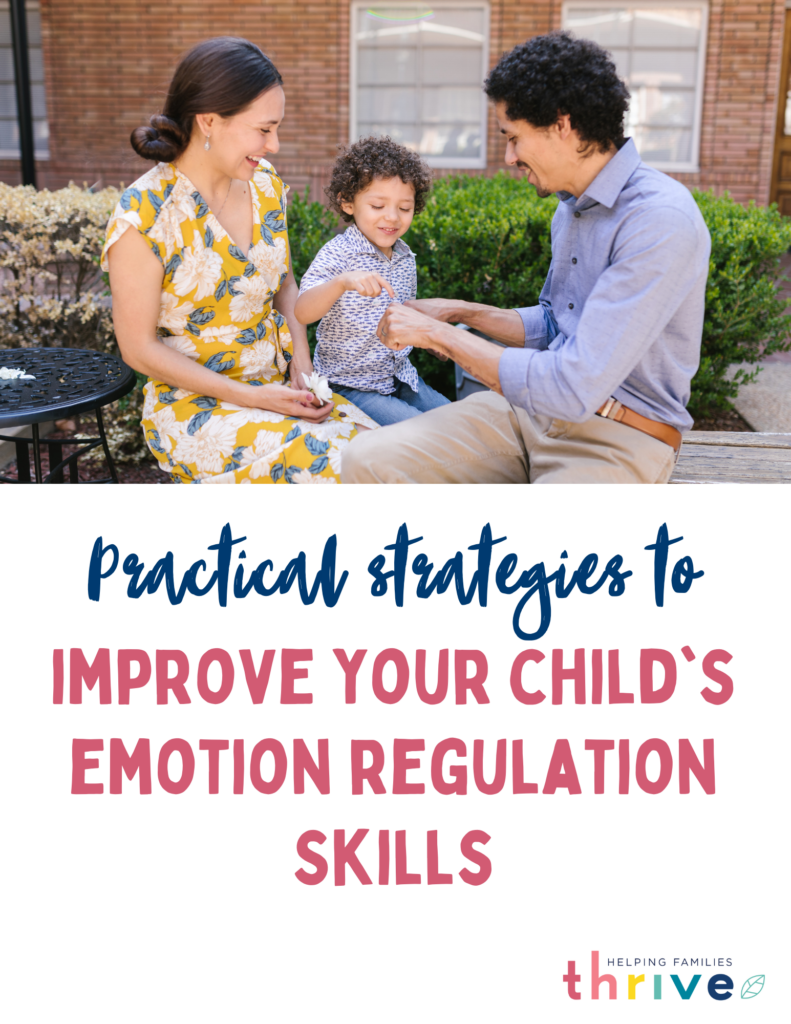

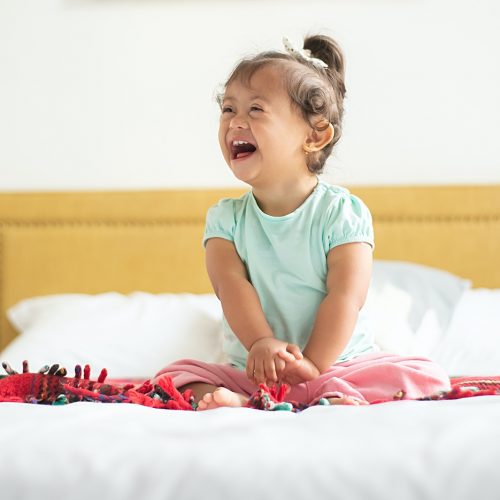
23 Comments
Comments are closed.